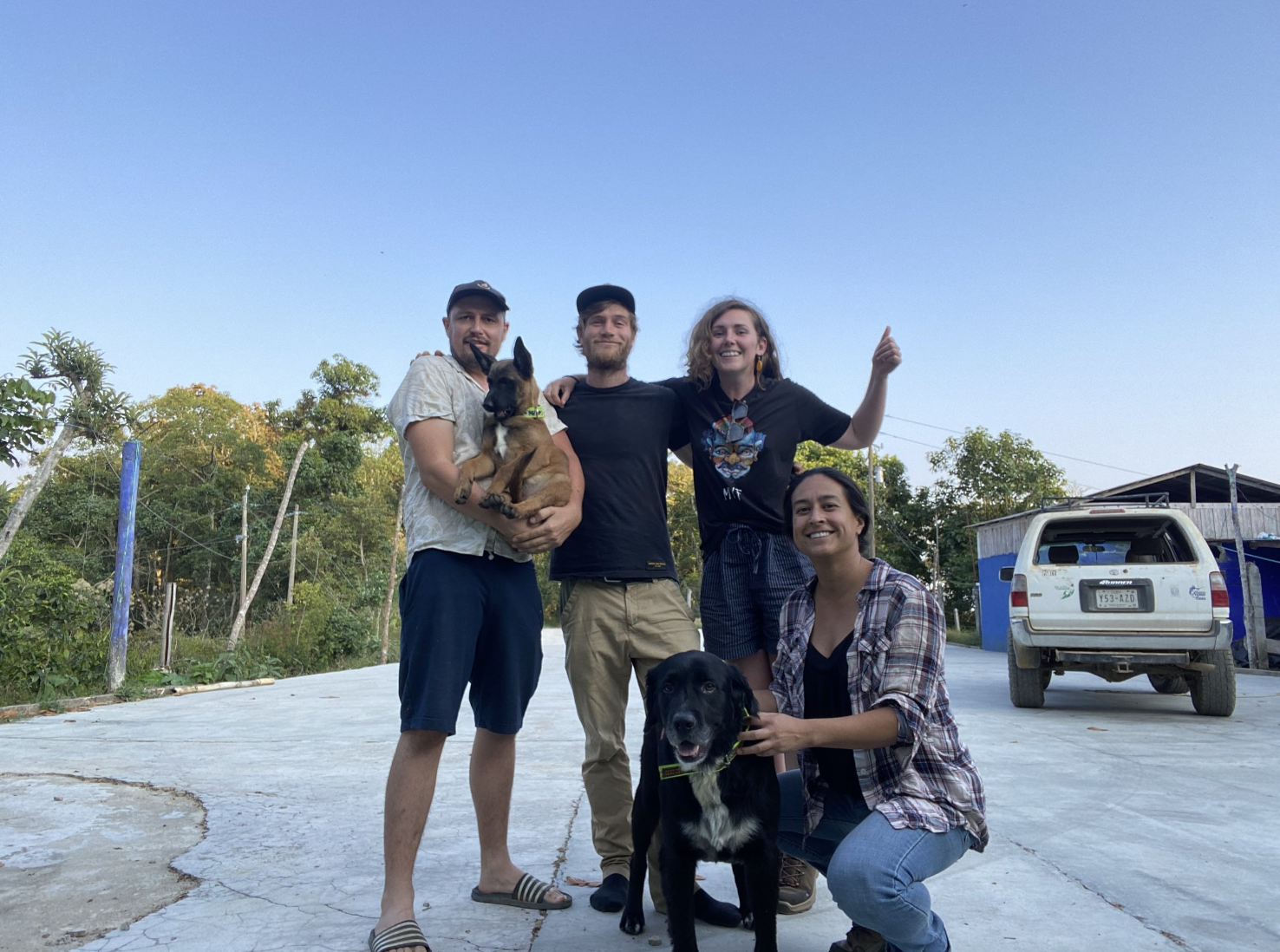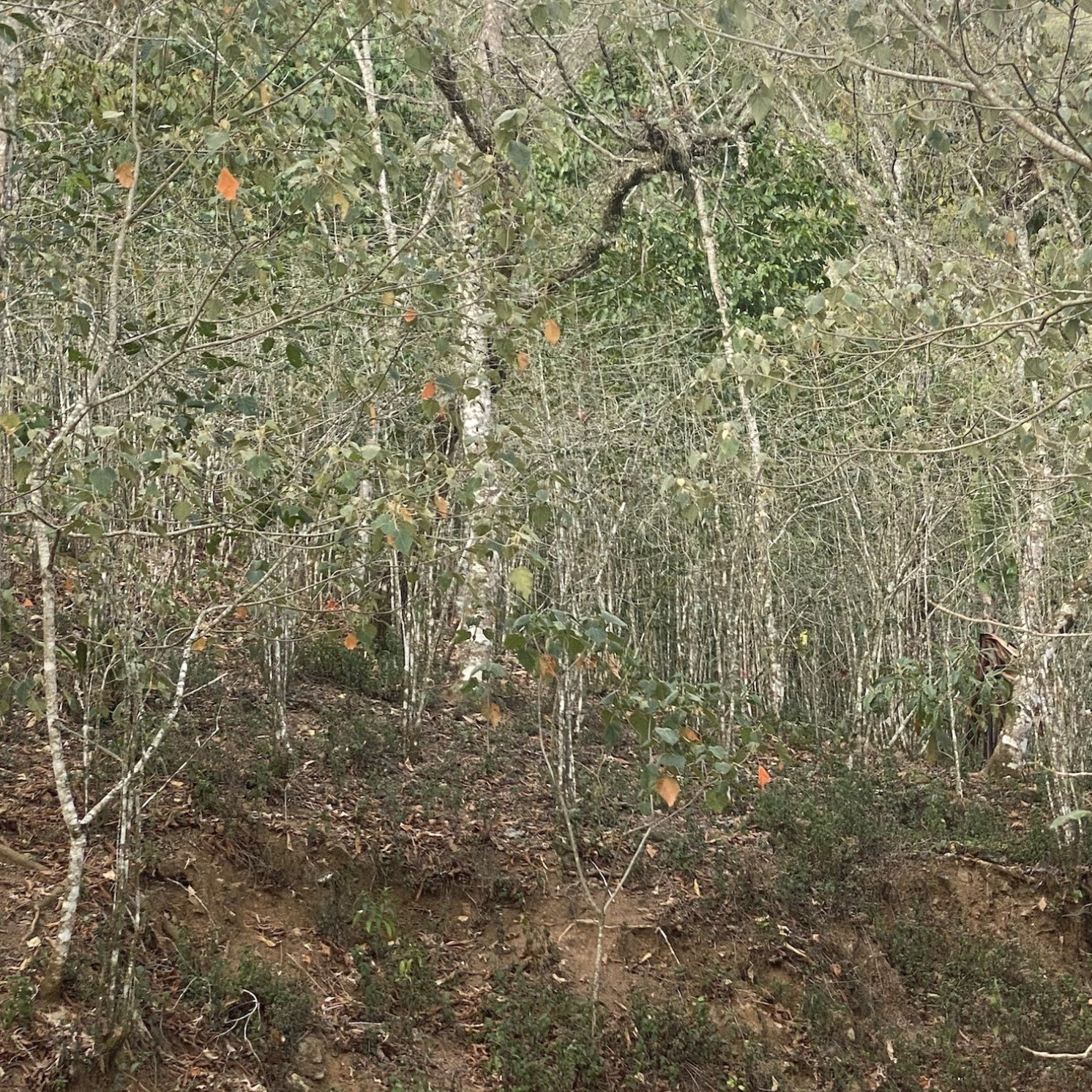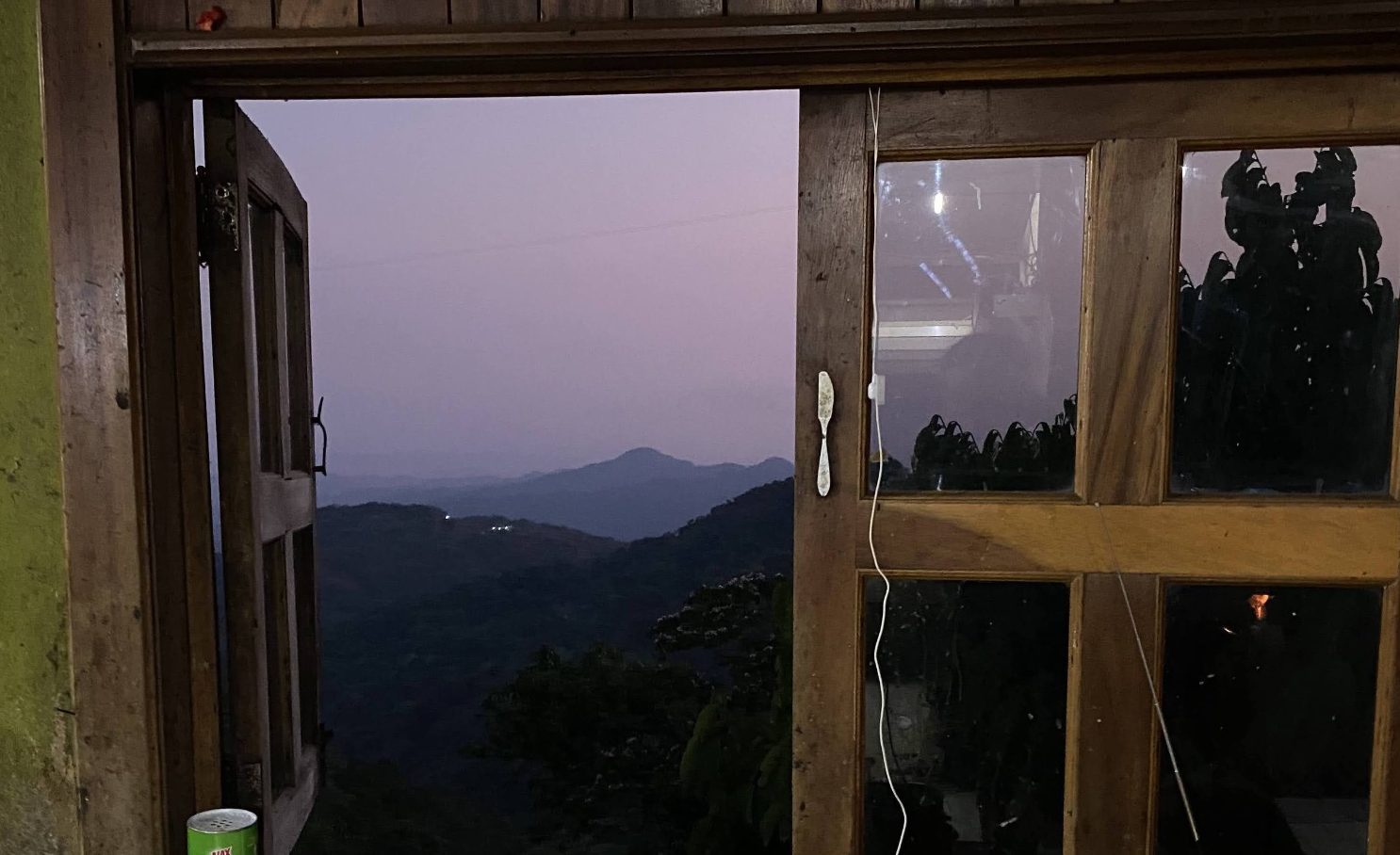Field Notes from Mexico
Jessie May visited our Mexican partners, Red Beetle, to learn about the challenges that face producers in the region of Oaxaca, and the importance of supporting them.
Jessie May and the Red Beetle Team; Shaun, Thomas, and Léo
I’m travelling with Red Beetle for just over a week, to visit the producers we purchase from in the region of Oaxaca. I will visit three Sierras in the region of Oaxaca; Sierra Sur, Sierra Juarez, and Sierra Mazateca. We begin our trip in the Sierra Sur.
The majority of the work we are part of in this Sierra is affiliated with Salomon Garcia Moreno, and Union San Pedro (or USP). Specifically, San Pedro is the name of the town that the co-op surrounds; and as such the cooperative of producers took on the name, to form Union San Pedro.
One of our first stops is to the village of Los Naranjos, which as well as being part of USP, has its own sub co-op. As importers, we have general understandings of what the terms associations and cooperatives mean, but they can be structurally very different in every circumstance, depending on the management but also culturally. Union San Pedro as a co-op is very different from what would see in a Colombian, Peruvian, Guatemalan, format; or even in the Mexican region, Chiapas.
Producers of Union San Pedro, with Thomas from Red Beetle, and Al and Miguel from Raw Material
Here, the co-ops have little formal infrastructure, no warehousing, and receive funds from the government which allow them to exist. Through Salomon, USP has strong ties with the WWF who provide trees, grown for reforestation.
Salomon is our main contact for the Sierra Sur, and he has a tremendous focus on reforestation built into his methodology. The Sierra Sur was heavily deforested over the last few decades. As wood is a cheap product, a producer can earn a lot of money for wood, by pulling up the abundant forests here. Trees were removed all over the Sierra, far more than other regions, and in turn far more exploited.
Salomon Garcia Moreno
Though deforestation has diminished, it still dictates the value of land, which is defined by the amount of trees that grow on each hectare. Areas that are higher than coffee producing altitudes are very expensive for this reason. The main tree grown and sold here is pine. The amount of pine trees per square makes the land more or less valuable. This deforestation means the Sierra Sur is a drier region, with less fertile soil.
In the beginning, the funds from the WWF were only for big shade trees, but now they are able to use the funds for the purchase of cacao and coffee trees, increasing production in the Sierra. Salomon tells us that the producers also plant cardamom, a lot of vanilla, and some cinnamon for additional profits. Land here to the unwitting viewer may look less formulaic than other producing countries, where old trees are often not cut down, as their height is used for the abundant production of vanilla vines.
USP’s producers have planted a considerable amount of vanilla here, which is a profitable cash crop that requires considerable fermentation, but relatively stable prices for the effort that goes into it. What’s more, the producers receive extra money for the trees that they would have cut down, to mitigate against the pull of deforesting for profit. Most communities grow vanilla, but only up to around 1200 MASL. Salomon has his own demonstrative fields, where he grows vanilla, cardamom, coffee, bananas, cinnamon, and coffee.
The dense forest cover of the Sierra Sur. Coffee is growing under a lot of this tree cover, invisible from this height.
Each country has a different approach to the production of coffee, and land tenure. Mexico is no exception.
Thomas and Félix examining the various cultures used to improve soil quality
Land in Oaxaca is largely seen as communal, meaning our typical understanding of a producer’s farm, and our assumptions about that, need to be changed when looking at Mexican coffee.
A producer is seen as a custodian of a parcel of land that is part of the community, gifted when the person has come of age, and often after they have completed work within the community, showing they are worthy of the land. These parcels of land are on the outskirts of towns, and it is extremely rare for someone to live on the land that they reside over. This land tenure in place of ownership means that the vast majority of producers do not have names for where they work.
This means that the lots we sell are named by the producer only.
Farm names, and photos from the land are very uncommon. Producers have a different relationship to the production of coffee, compared to other commonly thought of coffee producing countries.
We meet Félix, a producer from Los Naranjos. He invited us into his home for lunch, where we ate mole amarillo and met his family. To break the ice, I asked him about their regional language, Zapateco, and we translated words from Spanish to Zapoteco as we ate. Although it is a widespread language, the dialects from mountain to mountain make it incredibly hard for each remote speaker to communicate with one another.
After lunch, we drove to Félix’s own field, to see his lab, where he grows the soil additions that have rapidly improved the land’s productivity. Here, he naturally inoculates organic material with molasses, potassium, and microorganisms, to form a “chemical” free fertiliser. Felix also has a worm farm, and collects the nutrient rich run-off known as ‘worm tea’, that is a fantastic nitrogen fixing liquid that is a wonderful soil addition.
Inoculated molasses
Felix takes us to see the vanilla he grows on his land, and even gives us a chance to pollinate the vines. We took a spine from a nearby lemon tree, and cut open the base of the vanilla flower, and pushed the male and female parts of it together. Needless to say we weren’t very good at it, but it was an amazing experience.
When we left Felix’s land, we drove up to the nearby land of Blas Jacinto, we purchased a honey lot from him this year. The drive up to his land, which sits high above Los Naranjos, was surrounded by the spindly coffee fossils I was first shown in the morning. It’s sad to see coffee in this state, and more difficult to comprehend when the Red Beetle team reinforces that this issue is a reflection of coffee across the state.
Coffee trees; unpruned, old, and unrecognisable
Blas’ land approaches, and the condition thankfully changes. Trees have recently been stumped across his land, and young and bountiful Typica trees sit in stark contrast to the eerie white of the older trees in the distance.
In previous seasons, his coffee has been blended as a washed Union San Pedro lot. This is the first year he has a honey processed lot from his land. The field is largely the common mixture of Typica, Bourbon, and Pluma Hidalgo, with plenty of tall shading trees. Blas’ land is in the common format in this region, as well as across Sierra Juarez. All of the workable land sits outside of the town. In other places the fields are lived on, as well as worked. But here they live separate to the fields, much like someone who owns an allotment, just larger. The commute can be quite a stretch, as they don’t live near their fields. Blas’ field is roughly 1400-1500 MASL, and this season he produced slightly over 100kg. Processing in Oaxaca usually takes place at the home of the producer, delivered there by mules.
Blas’ land, a highly typical, well looked after coffee field in Oaxaca
Blas’ land is my first experience of a very typical Oaxacan coffee producer’s field. Most producers we work with take care of between 0.5 and 5 hectares. This is comparable even to the privately owned farms we work with in Colombia. Yet coffee production is incomparable, it is almost negligible here. This is for many reasons, but the most glaringly obvious one is the excessive amount of shade. Coffee here doesn’t grow in the monoculture lines we see in many highly productive countries.
In the Sierra Sur, some have managed to produce 16 - 30 quintalles on 0.5 Ha. It’s not quite as much as the average of Colombia, but not far behind, even without non-organic additions. Coffee is part of the landscape here, under the cover of shading pine. When you look across a mountain range in Oaxaca, coffee is invisible. All you see is rolling pine forests. When thinking of Risaralda, Colombia, they couldn’t be more different:
Risaralda, Colombia
The sun starts to set, and we make our way up to Finca Chelin, stopping for an atole on the way, and sleeping in the quarters of the seasonal staff, who’ve just finished up for the year.
We have to perfectly time turning off the lights with closing the cabin door. The insects that wander through the trees in pitch black darkness launch themselves at rocket speeds towards the cabin lights. I wake up several times in the night, to turn a light on in another part of the building, that steers the bugs away from where I’m sleeping. I meet my first praying mantis on the way back to bed, it looks like its dancing as I pass my torch across it.










